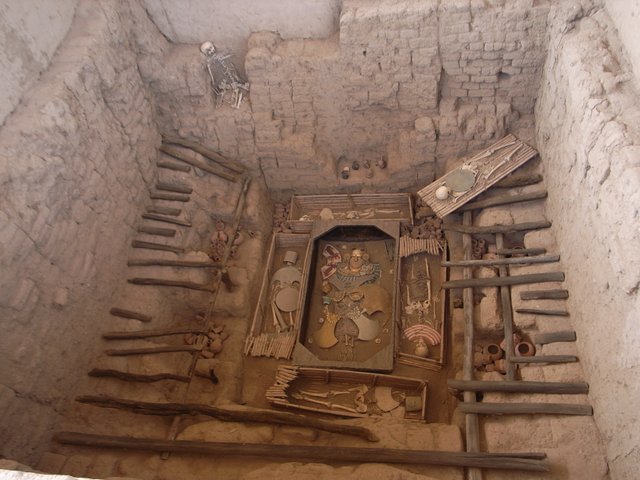On Boxing Day I was again picked up from my hotel at 08:30, and driven out to Huaca Rajada, a mud-brick burial platform from the Moche culture, spanning the years approximately AD1-700. Archaeologists were first alerted to the site in 1987, when looters discovered a burial rich in gold. There was a major falling-out amongst the thieves, and someone shopped them to the local archaeologist who turned up with armed police to raid the village and recover many of the gold artefacts. Subsequently, sixteen undisturbed burials have been discovered, some of them very rich indeed. The most famous one, the Lord of Sipán, dates from around AD300, and is sometimes described as “the Tutankhamun of South America”.

The tomb of the Lord of Sipán
The original gold and gilded-copper ornaments are now in a brand new museum in the town of Lambayeque (which I visited but photography was forbidden), but on site in Huaca Rajada there is a reconstruction of how the tomb was found. The Lord of Sipán is in the middle, with gold and turquoise earrings, pectoral ornaments made of shell beads, and gilded-copper crowns, back-protectors, and standards. He apparently died a natural death, and when he was buried six people were sacrificed to accompany him to the next world. Some were women – presumed to be his wives/concubines, one a child, and another perhaps a priest. The two bodies on the level above the principal burial have been interpreted as guards – their feet were amputated so that they couldn’t run away but would have to stay and guard the lord for all eternity!
